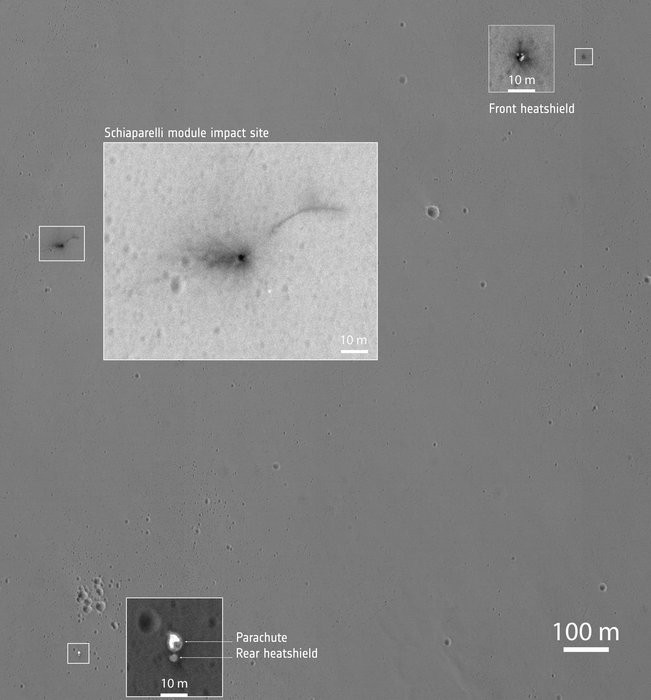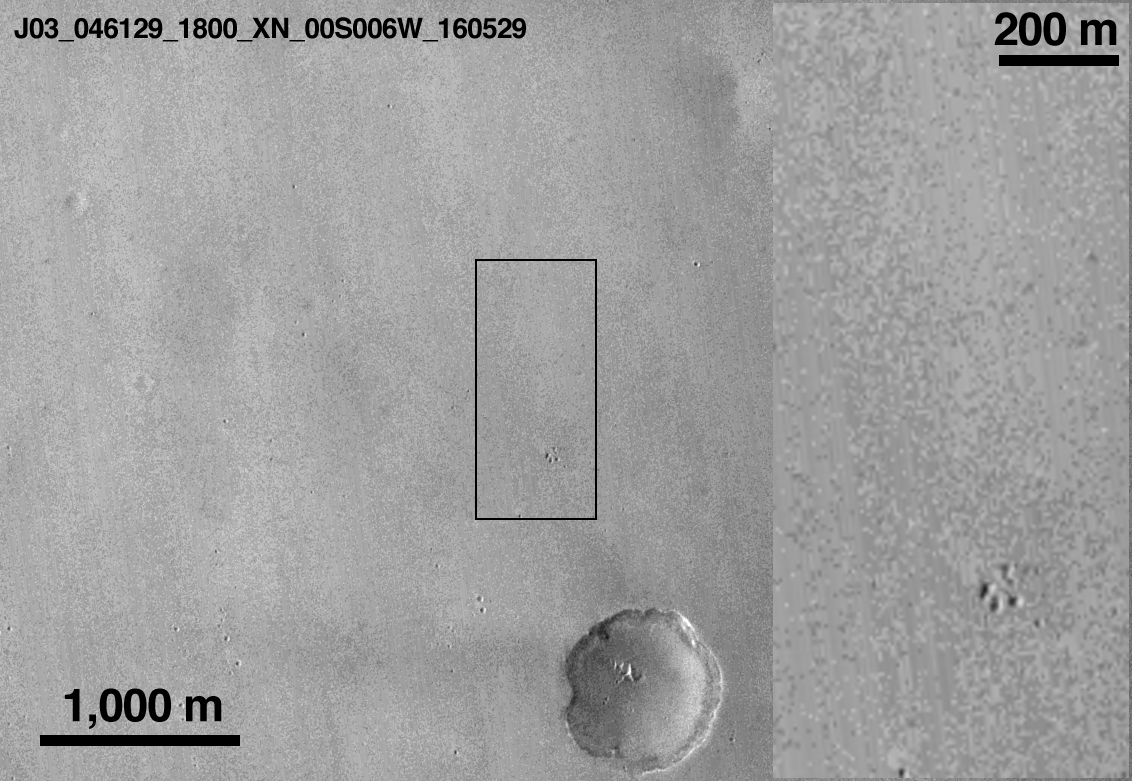Nasa images show scars on Mars - Schiaparelli probe probably exploded
The probe hit Mars at more than 180 miles per hour and may have exploded.

The highest resolution telescope on board Nasa's Mars Reconnaissance Orbiter (MRO) has returned detailed images of the landing site of the European Space Agency's Schiaparelli probe. There are three locations where equipment from the mission has been spotted, all within about a mile of each other.
The bright spot seen at the bottom-left of the picture is the probe's parachute and its rear heat shield.
The dark spot in the mid-left of the picture shows where the lander hit the surface of Mars. The spot is about 2.4m in diameter, which is about the size of the crater something of the lander's mass (300kg) making impact on the surface would be expected to create. The crater is probably around 50cm deep, the ESA says.
The dark line curving up away from the lander's crater is an unusual phenomenon that has not yet been explained. It is possible the lander exploded on impact as it still had reserves of rocket fuel, ESA says.
If this explosion happened asymmetrically, with most of the blast going in one direction, then this could cause the unusual pattern seen in the image, the agency says. It's not clear why the explosion would have been asymmetric and more images are needed to investigate this possibility.
The upper-right of the image is thought to show where the lander's front heat shield hit the surface. The small bright spots close to the centre of the impact could be insulation material.

The probe landed on Mars on 19 October. Its thrusters cut out early, its parachute was deployed prematurely and it went through a longer period of freefall than planned. The probe is thought to have dropped from a height of between 2-4km above the surface. By the time it hit Mars it was travelling at more than 300km/h, ESA says.
The ESA released images taken before and after the probe's landing.

Additional pictures from Nasa's HiRise telescope on the MRO are expected are expected to provide more information on the fate of the probe.
© Copyright IBTimes 2025. All rights reserved.






















